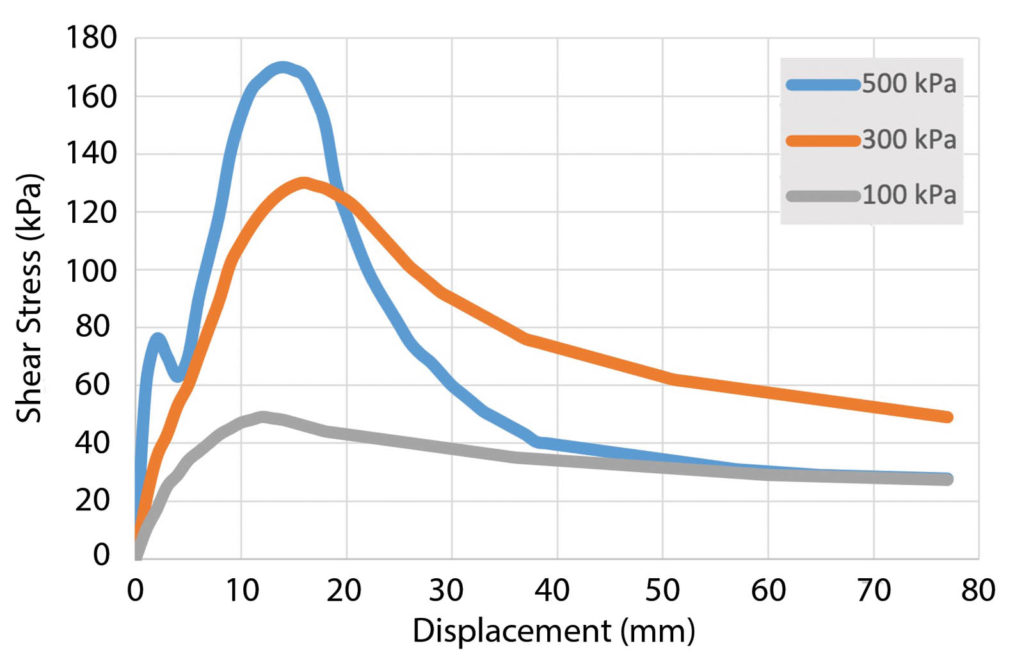Q: I was wondering if I could get some input about the residual strength of a geosynthetic clay liner (GCL). We have lab results where it is “flatlining” for the residual case (Figures 1 and 2, and Tables 2–4). The GCL is proposed for use in a landfill cell with ultimately a maximum of 98 feet (30 m) of waste on top. We have done global stability modeling, and the GCL internal shear strength as presented fails our specification for the residual case.





Regarding the mechanics of the test, it makes sense to me that if it is gripped, squashed and sheared aggressively, that it will pull the needlepunching apart and result in a low residual shear strength. However, I don’t think this is a likely failure mechanism within a landfill, as the displacements are unlikely to be that high on the cell floor (i.e., if the peak strength is enough, the residual shouldn’t be a concern).
On review of GRI Report 30, you appear to be able to measure a residual strength at high confining stresses. I was wondering if there is a different method used for this test?
Would appreciate any thoughts you have on the matter.
A: The third test looks strange at NP=72.5 psi (500 kPa). It has a hiccup in the beginning of the test and then a post-peak dramatic drop to residual. Check with the lab to see if all three modes of failure are the same and explainable. Gripping, clamping and friction plate compatibility are important at high normal pressures. The lab might have photographs of the failure surface after the test.
In short, I think you are comparing apples to oranges if modes of failure are different. Boundary conditions and box configuration should be changed to reconcile this situation. Clamping on the front of the box, gripping along the sides of the box and a high friction bottom surface with a free back (trailing end) is typical for high normal pressure situations. The Geosynthetic Institute (GSI) does have a guide, GRI-GCL-4, which gives recommendations for securing GCLs for midplane shear. We also recommend looking for skid marks posttest and not a wide-width tensile test of the geosynthetic being tested.
 TEXTILES.ORG
TEXTILES.ORG


